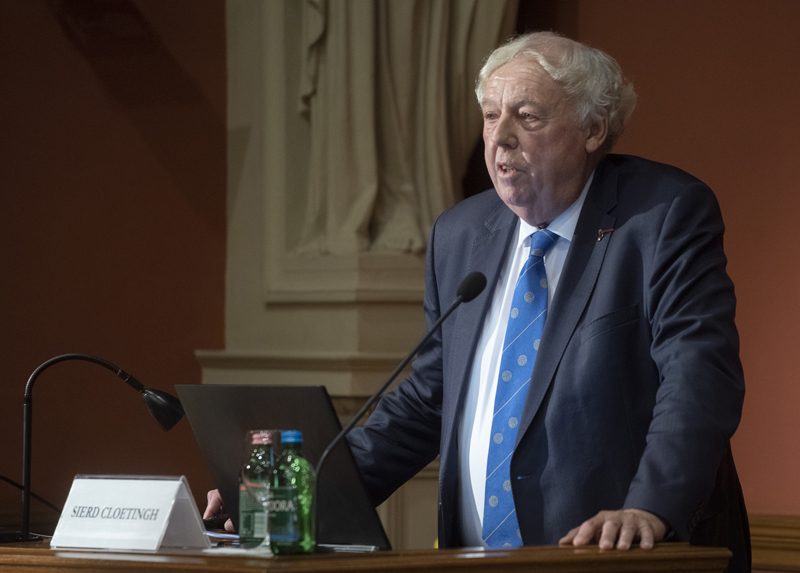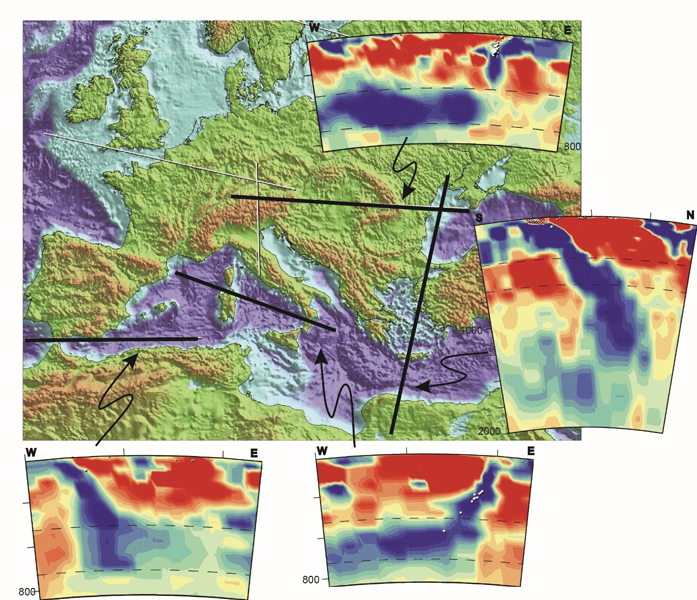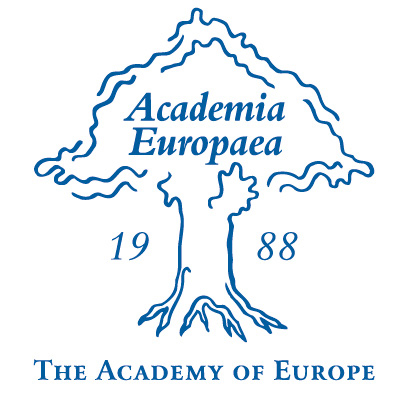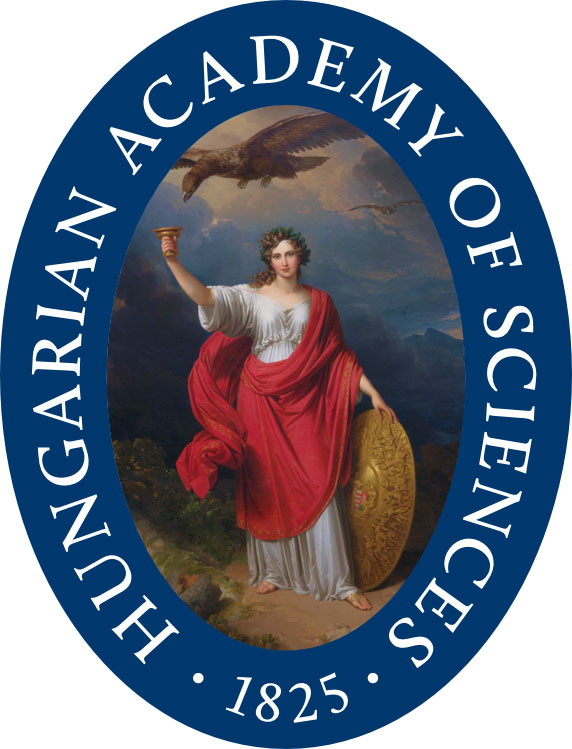Valedictory Presidential Lecture by Professor Sierd Cloetingh#
On 10th of December, 2021, Professor Sierd Cloetingh, President of Academia Europaea from 2014 till 2020, delivered his Valedictory Presidential Lecture at the Hungarian Academy of Science in Budapest to mark the end of his presidency. The lecture was held in the presence of Professor Marja Makarow, President Elect of Academia Europaea, members of the Academia Europaea Board of Trustees and distinguished guests and was chaired by the President of the Hungarian Academy, Professor Tamas Freund MAE. The lecture was also followed online by many members of Academia Europaea.
Sierd Cloetingh
Valedictory Presidential Lecture
Europe: Natural Laboratory for Frontier Research in Earth Sciences#
ABSTRACT: Integrated studies of the full Earth system across space and time scales are rapidly advancing. The International Lithosphere Program (ILP), connecting geophysical and geological sciences at their interfaces, promotes frontier research in Solid-Earth science, with high societal impact in the domains of geo-environment, geohazards and geo-resources. Probably one of the important developments in Solid-Earth science over the past decade has been the recognition of the importance of linking deep Earth dynamic processes with surface and near-surface geologic processes (e.g., Cloetingh and TOPO-EUROPE Team, 2007, Global and Planetary Change; Cloetingh et al., 2013, Tectonophysics; Cloetingh, 2020, Encyclopaedia of Solid Earth Geophysics). Deep Earth research, encompassing fields such as seismology and mantle geodynamics, has traditionally operated distinctly from fields focusing on dynamics near the Earth’s surface, such as sedimentary geology, geomorphology, and climate/paleoclimate. However, as realized by ILP, these endeavours have in common the study of Earth’s topography and the prediction of its origin and rates of change. Observations from surface studies, such as basin stratigraphy, geomorphology of landscapes, changes in surface elevation, and changes in sea level (Cloetingh and Haq, 2015, Science), provide some of the principal constraints on geodynamic and tectonic models. Conversely, deep geodynamic processes give rise to topography, thereby modifying regional climate, erosion, and sediment generation that are the basis of surface geology. The lithosphere, due to its stratified rheological structure, acts as a non-linear “filter” for deeper sources, attenuating long deformation wavelength and creating new, shorter wavelength deformation; giving a surface response more complex than that of the mantle source. It is the surface manifestations of these deep geodynamic processes modified by mantle-lithosphere interactions that have significant societal impact by (1) creating natural hazards, such as earthquakes and mass movements, and (2) controlling the distribution of natural resources including fossil fuels and geothermal energy. The relevance of research conducted in both the deep Earth and surface regimes is thus strongly enhanced through a focus on their interaction. Long-term inner Earth processes, such as mantle flow, drive the system of mantle-surface interaction. However, short-term outer Earth processes such as erosion and climate tune the response. The continental lithosphere transforms deformation generated at its base by mantle flow, but surface processes control many of the observables such as topography, sedimentation and exhumation rates, and thus further filter the source and even tune the response through cyclic processes such as climate. However, little is known on how far these interactions may go, or how these different processes are coupled or feed back into the dynamic system. At the same time, many modelling or theoretical studies suggest that erosion and sedimentation do impact the subsurface evolution of crustal deformation, changing flow patterns and magnitudes in the ductile crust and mantle through changing gravitational stresses or kinematics.
Europe through its well-studied natural laboratories, such as the Northwestern European Atlantic continental margin and the Pannonian Basin-Carpathian Mountain system of Central and Eastern Europe, is an excellent place to further advance insights in the interaction of deep Earth and surface processes. The high level of integrated solid Earth science, the existence of platforms for community building, such as Academia Europaea, TOPO-EUROPE and the European Plate Observing System EPOS are also crucial in this respect. This provides a solid foundation to connect frontier science and societal relevance in the domains of geo-energy and natural hazards on a full pan-European scale. The science base in Europe is now rapidly developing to bring geothermal energy into power in plate interiors, significantly enhancing its contribution to the energy transition in Europe and elsewhere.
BIOGRAPHICAL NOTE:#
Sierd Cloetingh is Utrecht University Distinguished Professor. His research field is Earth Sciences. He published 376 papers in international peer-reviewed journals (Scopus: 17,523 citations, h-index 73) and has been promotor of close to 80 PhD students of 18 different nationalities. Currently he serves as President of the Academia Europaea, Member of the Board of SAPEA
Distinguished Professor. His research field is Earth Sciences. He published 376 papers in international peer-reviewed journals (Scopus: 17,523 citations, h-index 73) and has been promotor of close to 80 PhD students of 18 different nationalities. Currently he serves as President of the Academia Europaea, Member of the Board of SAPEA (Scientific Advice for Policy by European Academies) and Chair Coordinating Committee Europe of the International Lithosphere Program. Past functions include President of the Association for European Cooperation in Science & Technology
(Scientific Advice for Policy by European Academies) and Chair Coordinating Committee Europe of the International Lithosphere Program. Past functions include President of the Association for European Cooperation in Science & Technology (COST), Membership of the Scientific Council (2009-2015) and Vice-President of the European Research Council
(COST), Membership of the Scientific Council (2009-2015) and Vice-President of the European Research Council (ERC), President of the European Geophysical Society
(ERC), President of the European Geophysical Society (1998-2000), President of the International Lithosphere Program
(1998-2000), President of the International Lithosphere Program (ILP), Distinguished Professor of the Royal Netherlands Academy for Arts and Sciences
(ILP), Distinguished Professor of the Royal Netherlands Academy for Arts and Sciences (KNAW, 2006-2015), Editor-in-Chief of the international journal "Global and Planetary Change
(KNAW, 2006-2015), Editor-in-Chief of the international journal "Global and Planetary Change " and Chairman of the ESF TOPO-EUROPE large-scale European collaborative research program.
" and Chairman of the ESF TOPO-EUROPE large-scale European collaborative research program.
Sierd Cloetingh received honorary doctorates from five European universities and numerous medals and awards. He is member of the Royal Netherlands Academy of Sciences and the German National Academy for Technical Sciences (acatech), Foreign member of the Royal Norwegian Academy
(acatech), Foreign member of the Royal Norwegian Academy , Royal Danish Academy
, Royal Danish Academy , Heidelberg Academy, Bavarian Academy of Sciences
, Heidelberg Academy, Bavarian Academy of Sciences and honorary member of the Hungarian Academy of Sciences
and honorary member of the Hungarian Academy of Sciences . He was distinguished in 2005 as Chevalier de Legion d'Honneur and in 2014 as Knight of the Royal Order of the Netherlands Lion for his contributions to science and European scientific cooperation in research and education.
. He was distinguished in 2005 as Chevalier de Legion d'Honneur and in 2014 as Knight of the Royal Order of the Netherlands Lion for his contributions to science and European scientific cooperation in research and education.
http://www.ae-info.org/ae/Member/Cloetingh_Sierd
https://www.uu.nl/staff/SAPLCloetingh





